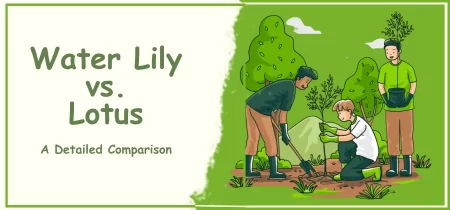Summertime is a time for watermelon, and with good reason. This delicious fruit contains vitamins, minerals, and antioxidants, making it a healthy snack. But how much watermelon do you need to enjoy it to its fullest? And what about other fruits? Do they need as much water as a watermelon?
In this article, we will explore the topic of water consumption in different fruits and vegetables. We will also provide tips on measuring how much water your product needs to get the most out of your product and not waste any food.
How much water do watermelons need?
Watermelons need about 1 gallon of water per day. This will vary depending on the climate and variety of watermelons, but it is usually a good estimate.
Watermelons are a type of fruit that requires water to grow and thrive. You can check the water level in your melon by inserting a wooden chopstick into the fruit. If the watermelon is halfway submerged, it needs more water. If the stick goes in all the way, the melon needs less water.
How much water should you give a watermelon?
Watermelons need about one and a half inches of water per day to stay hydrated. So, if you have a watermelon about two inches in diameter at the stem, give it around three cups per day. If your watermelon is bigger or smaller, just divide the cups by two to get the amount of water it needs per day.
How to water a watermelon properly.
Watermelon is a fruit that needs a lot of water to grow and to stay healthy. To water a watermelon, start by determining how much the plant needs per day. Then, use a measuring cup or garden hose to pour water onto the ground around the plant’s stem.
Wait five minutes and measure how much water drained from the pot. Use this information to calculate how much water the plant needs daily.
Pour that amount of water into the pot, wait another five minutes, and measure how much has drained away again. This will give you an idea of how much water the plant uses daily.
What are the signs that watermelon is getting too dry?
If you’re noticing that your watermelon is getting a little on the dry side, here are some signs to watch: The rind may start peeling or cracking.
The fruit may start to wither and turn a pale color. And finally, the flesh may start to break apart when you try to slice it. If these things happen, give your watermelon some extra water!
What to do if your watermelon is still not juicy after giving it enough water
If your watermelon is still not juicy after giving it enough water, you can do a few things to help. First, make sure you’re watering the fruit thoroughly. Second, if the watermelon is too big or heavy to carry, try cutting it in half before watering it. Finally, if you still need to think the fruit is getting enough water, try submerging it in cold water overnight.
How do watermelons grow?
Watermelons are a type of fruit that grows on vines. The vines grow around a stem and attach to a fruit tree or other plant. The watermelon has a lot of water, so the vine can absorb that water and send it down to the fruit.
Depending on the climate, how much water a watermelon needs will change. In hot climates, plants need more water because they’re getting heat from the sun. The plants need less water in cooler climates because they don’t get as much heat.
Can you overwater a watermelon?
Watermelons are susceptible to overwatering when growing, but they can also be affected by overwatering when they’re in the stores. Watermelon is most vulnerable when it’s about to reach maturity and during the summertime when it’s actively growing.
To prevent over-watering a watermelon, always keep an eye on the fruit itself and ensure it’s getting the amount of water it needs. If you notice that the fruit is starting to swell or if the skin starts to turn brown, it’s time to reduce the amount of water you’re providing.
Frequently Asked Questions
How much water do watermelons need?
Watermelons need about one and a half gallons of water per each pound they weigh. So a 5-pound watermelon would need about 10 cups of water to hydrate it.
How can watermelon be stored?
Watermelon can be stored at room temperature in a plastic bag for up to two days or in the refrigerator for up to four days.
Can watermelon be frozen?
Yes, watermelon can be frozen. Cut the watermelon into small pieces before freezing to reduce the volume and weight.
Can watermelon be cooked?
Yes, watermelon can be cooked. Cut the watermelon into small pieces before cooking to reduce the volume and weight.
Conclusion
Watermelons are one of the most popular fruits and for a good reason. They’re sweet, juicy, and delicious. But what do you do if your watermelon looks a little wilted? According to the USDA, a watermelon needs about 2 inches of weekly rainfall to stay healthy and edible.
If you live in an area with consistently dry conditions, consider watering your fruit more frequently than that. And if you have any other questions about caring for your watermelon or other vegetables, reach out to your local garden center or Extension office for help!




Leave a Reply